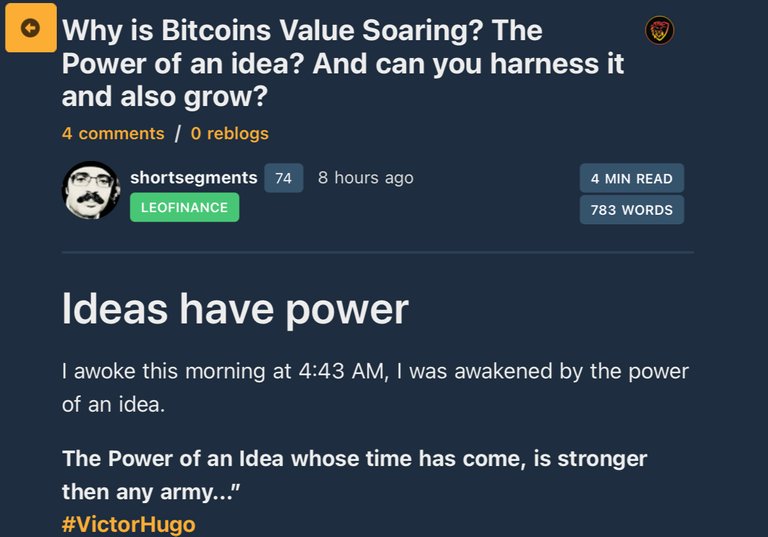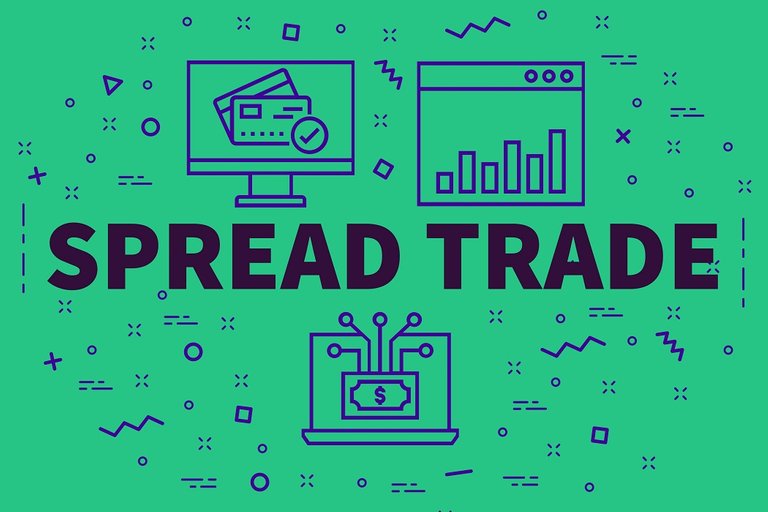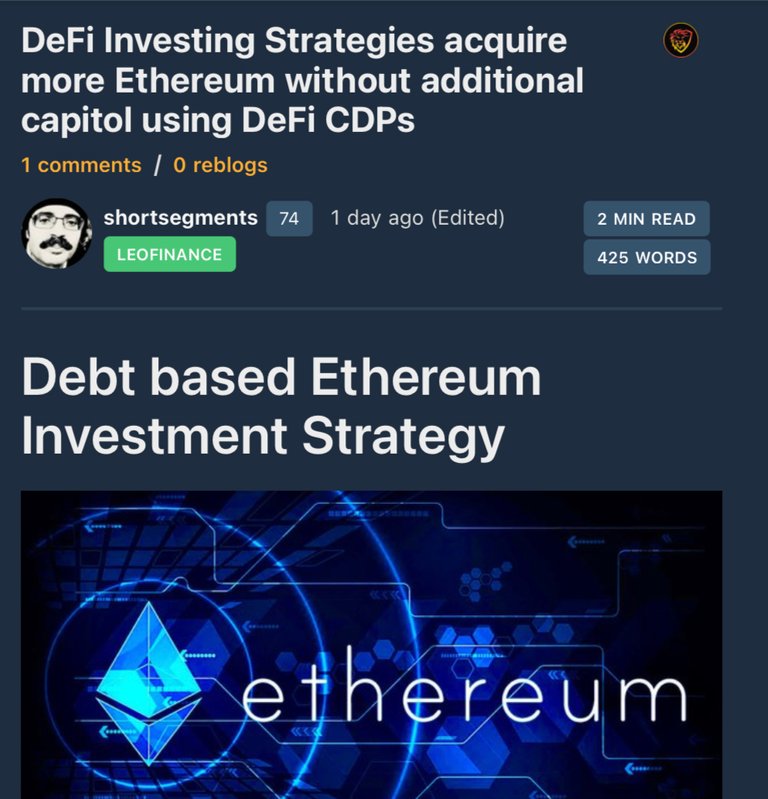Options Spreads as a financial investment niche: part 1
My financial investment niche is options, and I write often about this niche.!
Investing is a diverse group of activities, some are good at real estate investing, others stocks and others cryptocurrency. I have been investing in cryptocurrency for 3 years, but before that I was an options trader, that was my investment niche.
I am began my journey as a trader of covered calls, actually a Seller of Call options on positions I held in my retirement account. My broker suggested it during a flat performance year in the Stock Market. I was intrigued by the ability to sell these Call Options on my positions and make money every month.
#Option
An option is an investment vehicle, but also a contract, which gives you the legal right, but not the obligation, to buy or sell a security at a certain price, within a certain times period, in return for a fee, per share, called a premium. And stock options must be purchased in groups of one hundred, called contracts.
#Call-Option
This is an option which gives you the right, but not the obligation, to buy a security at a certain price, within a certain times period, for a fee per share called a premium, and are purchased in groups of one hundred called contracts.
Covered Calls
I started my options trading journey selling covered calls on stocks I owned in my retirement account. I didn’t want to sell them, I wanted to increase my return on my investment.
Stock price appreciation
This is the primary way people earn a return on their stock investment, an increase price.
Dividend payment
Every 3 months when your stock investment gives a quarterly report, the CEO and Board of Directirs can choose and vote to return a portion of the companies products to stock holders or share holders.
Selling Covered Calls
This allowed me a third source of income from my investment. I enjoy selling covered calls on stocks I own, so much so, that I typically buy stocks only in groups of 100 or more because you must sell contracts in groups of 100 stock shares.
Option Chain
I start by checking the option chain, which is a list of available options contracts on my stock, which is usually a listing of Call and Put contracts.
I look for a price I don’t expect the stock to reach, in 30 days or less and a decent premium. I sell the Calls, giving someone the right to buy my stock from me, at a certain price, in exchange for a payment called a Premium.
#Premium
A payment made to the seller of either Call or Put options, granting the right, but not the obligation to buy or sell a position, at certain price, on a certain date and it’s not refundable.
I started selling Call Options every month. The amounts were small, on 200 Shares of 135 dollar Apple, I collected 100-300 dollars per month on a 27,000 dollar investment, every month, giving me an extra 1500-3000 per year. It’s a small return of 4-6% per year, but it’s in addition to the other returns like quarterly dividends and stock price appreciation.
Spreads
I sold covered calls exclusively for a few years, until a friend introduced me to a book by Wade Cook, a taxi driver, turned stock trader, who became a millionaire trading and then became a millionaire selling books and doing courses on trading. This book introduced me to buying and selling Call options as a pure buy low and sell high investment strategy.
I sold them for many years, and got into buying and selling before stock splits and quarterly earning announcements. While most investors shy away from investing during those two events due to volatility, a subgroup of options traders trade these situations frequently. They do so because volatility increases prices for Premiums and allows higher profits, if you guess the outcome correctly.
But I felt that probability of success was low in that niche of option trading, so I left it after a year and started selling Spreads.
#Spreads
You sell an option and buy an option on the same stock, with different prices, but same expiration date and same number of contracts.
You make money selling the option, and spend money buying the second option. You chose the prices in such a way as to either put money in your pocket, immediately a #Credit-Spread or you take money out of your pocket, called a #Debit-Spread.
Defined Risk
I like Spreads, specifically Defined Risk trades, where you know your maximum profit, and your maximum loss. In this case you know exactly how much your risking. In addition you can use the probability tables, which are part of the #Option-Chain listing.
Example
I sell 1 contract of Apple 125 dollar calls, I buy 1 contract of Apple 130 calls. This means I sell someone the right for them to buy my Apple at 125, and I buy the right to buy Apple at 130. I collect 75 cents per share or 75 dollars per contract of 100 Shares, I pay 25 cents per share or 25 dollars, and my net is 50 dollars on one contract, which goes directly to my pocket. In this way, if Apple never reaches 125 the call I sold expires and the calls I bought expire and I make 50 dollars per contract.
My profit is defined 50 dollars.
But if Apple reaches 125 dollars and one cent, I have to sell one hundred shares of Apple for 125 dollars, which means I have to buy 100 shares of Apple for 130 dollars. Fortunately, this is the same trade, so I pay only the difference between 125 and 130, 5 dollars per share, for 100 shares, or 500 dollars.
#defined-Risk
My risk is defined, as the difference or spread between the two prices 125/130 of 5 dollars per share, times 100 shares, or 500 dollars minus the premium I received 50 dollars. So I am risking 450 dollar loss for a 50 dollar gain. My risk or possible loss are defined.
#Control at low price
As you can see, I control 100 shares of Apple at 125 a piece, or 12,500 dollars fir a small premium. It’s this ability to control 100 shares of stock, worth 12,500 dollars that’s called #leverage. Using leverage I risk only 500 hundred dollars instead of 12500.
Now the tricky thing about Options Spreads, is that you can calculate your probability of success using the probability of the stock closing at a certain price, and profits are inversely related to probability and risk.
The option chain tells you the probability that a stock will close at a certain price. These numbers are calculated using Nobel Prize winning mathematical probability formula.
The option chain will indicate for example Apple’s current price is 100 the probability that Apple’s price will reach 105, a 5% gain in 30 days is probably 0.25 or a ,25x100= 25% chance of it hitting that price. But a 0.75 chance is thus inferred of it not hitting that price, or 0.75x100=75% chance it won’t reach 105. So the cost to buy this option is low.
This is contrasted with the probability that Apple will reach 101, a one percent increase in price. The probability is much higher, around 50-55%. Thus inferring there is a 45% chance it won’t reach that price. But the premium is much higher because of the higher probability of Apple getting to 101.
The funny thing is that most people would think it would be close to 100% chance, but in reality, in purely mathematical terms, the probabilities are in general a stock can go up, go down or price can stay the same. These are all equal probabilities of 1/3 or 0.33 each, 0.33 x 100 = 33%, so the probability that Apple going to 101 being 55% is much greater then chance, because chance is 33%. But even a one dollar gain is not guaranteed, as the math states it’s 55%.
If you think about it, your typical stock chart doesn’t go straight up, it’s a choppy line characterized by gains and losses, which have a generally upward, generally downward or generally sideways pattern. This is explained by the math. Every day there’s a 1/3 probability of up, down or sideways. But remember yesterday’s result doesn’t effect today’s outcome. Each day, like each roll of the dice is an independent mathematical event.
But by using these probabilities you increase your overall mathematical chances of success.
Rolling or Closing early or late
The other thing about options is that you don’t have to wait until expiration to close your position, by selling the Call you bought, and buying back the Call you sold. When you sell a spread your maximal gain is defined at a certain price, like 50$. Once you see that the prices of the options you purchased have changed, so you can close the position at a 25 dollar profit, you should close it. That’s closing early, because if you get 50% of the maximum, you have a bird in the hand. If you wait to collect the additional 25 dollars you are risking the loss of 450 dollars for that additional 24 dollars, which most traders won’t do, as the risk 450 nearly 18 to 1, versus the initial risk of 50/450, which was 9:1.
Explanation via Math
Initially
Credit was 50$, risk was 500-50 or 450 dollars, 450/50 is 9;1.
However, once your profit on the trade is 25 dollars, your now risking 450 for 25, 450/25 = 18, risk reward is now 18:1, so you close the position.
Lowering Risk
You have a choice of picking your spread prices, so I picked 125/130 in the above example, a 5 dollar spread, and therefore a potential 5x100 or 500 dollar loss. Many options traders stick to 1 dollar spreads by choosing prices one dollar apart. 125/126. Then by subtracting the premium they reduce their potential loss further.
If I sold the 125 for 0.75, and
I bought the 126 for 0.50, my potential profit is 0.75-0.5=. 0.25 x 100 or 25 dollars.
My potential loss is 126-125= 1, minus my credit of 0.25 = 0.75 x 100 equals 75 dollars.
Thus by choosing a smaller one dollar spread 125/126, I reduce my risk, but also reduce my profit.
Summary
Option Spreads are an investment vehicle characterized by lots of math, but the math is basic addition, subtraction, multiplication and probabilities. Probabilities are just fractions, decimals, percents and odds. The nice thing is that not only can you calculate your probability of success so that you only take on the amount of risk your comfortable with, but you also define your exact losses going into the trade.
In high probability options trading, a popular slogan is get rich slowly. But it is rare to get rich trading options. But you can make a good living, independent of a job and the vagaries of employment...or it can be a side income. But you need to watch your positions daily.

Signature!
Other Posts by @shortsegments

Other Posts
Leofinance, the Star Trek Borg of social media finance blogging.
Six ways to earn Leo Token and Ethereum on Leofinance
A Brief Look at Centralized and Decentralized ExchangeLink
Posted Using LeoFinance Beta



https://twitter.com/shortsegments/status/1346615832231641088
I like what you listed first in cover calls. Slow and steady gains and a great way to earn back principle while holding shares long term.
Posted Using LeoFinance Beta
I agree with you, that it’s a smart way to increase your return on investment. While holding for longterm appreciation. I really appreciate these articles.
Posted Using LeoFinance Beta
Thank you
Posted Using LeoFinance Beta
Thanks, they are my favorite!
Posted Using LeoFinance Beta
I agree with you, that covered calls are a smart way to increase your return on investment. While holding for longterm appreciation. I really appreciate these articles.
Thank you for this explanation of options. I think this is a very good tool for every investor to have.
Posted Using LeoFinance Beta
Thanks
Posted Using LeoFinance Beta
Draft Post:

Cryptocurrency YouTube Influencer and Twitter Influencer CryptoWendyO has joined Leofinance.
I am happy to report after some Twitter DM messaging CryptoWendyO is joining Leofinance!
I am very happy to announce this because she is active on YouTube and Twitter, and she is also a promoter and marketer by trade. She is part-time YouTube/Twitter and full time on her own Cryptocurrency Media business.
Her Hive account name is CryptoWendyO and I created her account using a referral link off Twitter (Alookkummar referral link actually). She is very busy, so I will assist her in publishing to Leofinance.io
Please add her as a friend on Twitter, Subscribe to her YouTube Channel and please welcome her to Leofinance.
This is her contact information where you can learn more about her!
Contact Info:
Interviews
She has interviewed several cryptocurrency personalities and I think it would be great to request that she interview the leader of Leofinance @khaleelzaki or perhaps she could be a guest on the Leo Podcast?
Posted Using LeoFinance Beta